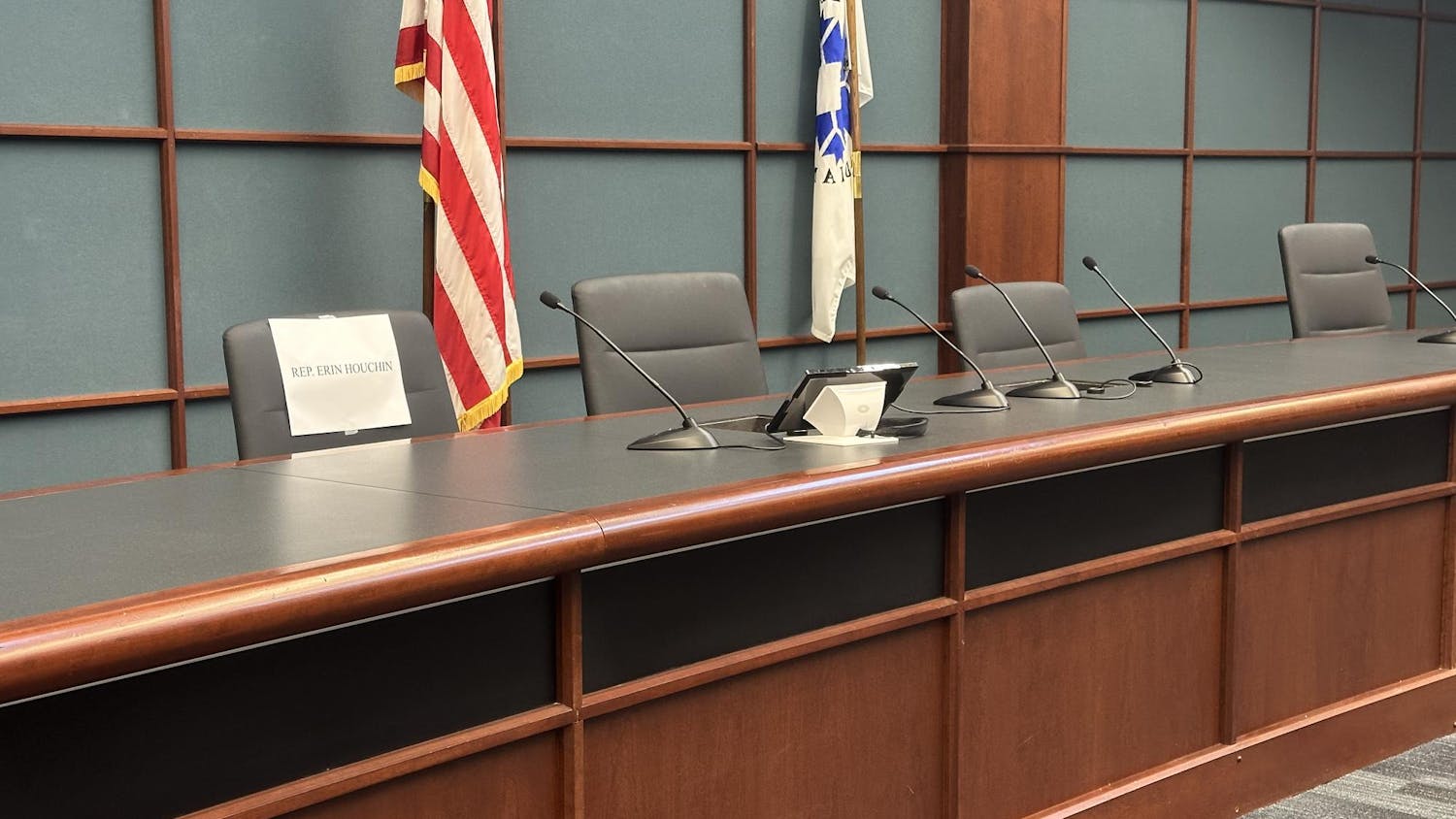JIMANI, Dominican Republic -- Rescue workers with dogs and shovels searched muddy villages Wednesday for victims of deadly floods in the Dominican Republic and neighboring Haiti. The death toll rose to more than 550, with hundreds still missing.\nU.S.-led troops returned to stricken Haitian towns early Wednesday, bringing drinking water, medical supplies and food. The troops are from a multinational force sent to stabilize Haiti after President Jean-Bertrand Aristide was ousted Feb. 29.\nThe Haitian government said 250 bodies have been found -- most in southern Haiti -- with 158 missing and presumed dead in Fond Verette, near the Dominican border town of Jimani, where another 300 were killed by the weekend storm.\nAbout 100 of the corpses were recovered in the southern Haitian town of Grand Gosier, 30 miles west of the Dominican border and another 100 were found in neighboring Mopou, said Marie Alta Jean-Baptiste, Haiti's Civil Protection director. The other bodies were found in Haiti's central and western provinces.\nDominican troops found at least 20 badly decomposed, half-buried bodies Wednesday, raising the toll around the border town of Jimani to more than 300.\nFamilies in the town were given forms asking them to list missing relatives.\n"The victims we find will be buried where they are," said Eddy Olivares with the Dominican Republic's Civil Defense. \nHe said many corpses were so badly decomposed they could not be moved.\nIn Haiti, meanwhile, workers recovered about 100 corpses in southern Grand Gosier and 100 more in the neighboring town of Mopou, said Haiti's Civil Protection Director Marie Alta Jean-Baptiste.\nAt least 158 were missing in Fond Verette, a Haitian border town, and Dominican officials said more than 250 were unaccounted for on their side of the border.\nTrucks dumped more than 100 bodies into a mass grave Tuesday outside of Jimani, a Dominican town of about 10,000 on the Haitian border and largely populated by Haitian migrants. Sobbing parents waited for the tiny caskets of their children to be buried.\nIn the days leading up to the flooding, heavy rains pelted the island of Hispaniola, which the Dominican Republic and Haiti share, causing the shared Solie River in the southern border town of Jimani to burst its banks. Many were sleeping Monday when torrents of mud swept away entire villages.\n"We can't find her anywhere," cried Norma Cuevas, 32, as she desperately searched for her 63-year-old mother Tuesday.\nAn Associated Press reporter had counted at least 200 bodies on the Dominican side of the border by Wednesday. Officials said another 100 or so had been dumped in a mass grave, according to Lt. Virgilio Mejia, with the Dominican National Rescue Commission.\nMultinational forces in Haiti made 12 helicopter trips to Fond Verette Tuesday to assess the needs of an estimated 3,000 people. The town's roads have been blocked by mudslides.\nHelp has not yet been able to reach Mopou, and more than 150 are reportedly injured and without health care, the Haitian government said. Other towns were also in need.\n"There are other places that need help but we can't do it all," said U.S. Marines Lt. Col. Dave Lapan, whose forces are set to make a handover to a U.N. force on June 1.\nThe death tolls have been high in Haiti because the impoverished nation is nearly 90 percent deforested and many of the poor build poorly constructed homes.\nJimani, about 100 miles west of the Dominican capital of Santo Domingo, is inhabited mostly by Haitian migrants who settled in makeshift villages to sell food at the markets held on Tuesdays and Fridays.\nDominican officials said some of the Haitians who lost family members may have been living in the town illegally and were scared to identify bodies.\nThe Dominican government issued an alert Sunday, warning people that rivers may swell with the rains. But Jimani has only limited access to radio broadcasts.\nPeople whose houses still stood scooped water from their living rooms Tuesday while chairs and mattresses floated in pools of water. Hundreds of houses were destroyed on both sides of the border.\nAs rescue workers and families pulled bodies from the mud, medical teams draped work areas with mosquito netting. The insects can carry parasites that cause malaria and dengue fever. Some people were also being given tetanus shots.\nThe floods were some of the deadliest in a decade.\nIn 1994, Tropical Storm Gordon caused mudslides that buried at least 829 Haitians. More recently, nearly 30 people died in September during floods caused by heavy rain in St. Marc, about 45 miles northwest of the capital, Port-au-Prince.
Severe floods afflict Dominican Republic, Haiti kills hundreds
Get stories like this in your inbox
Subscribe



